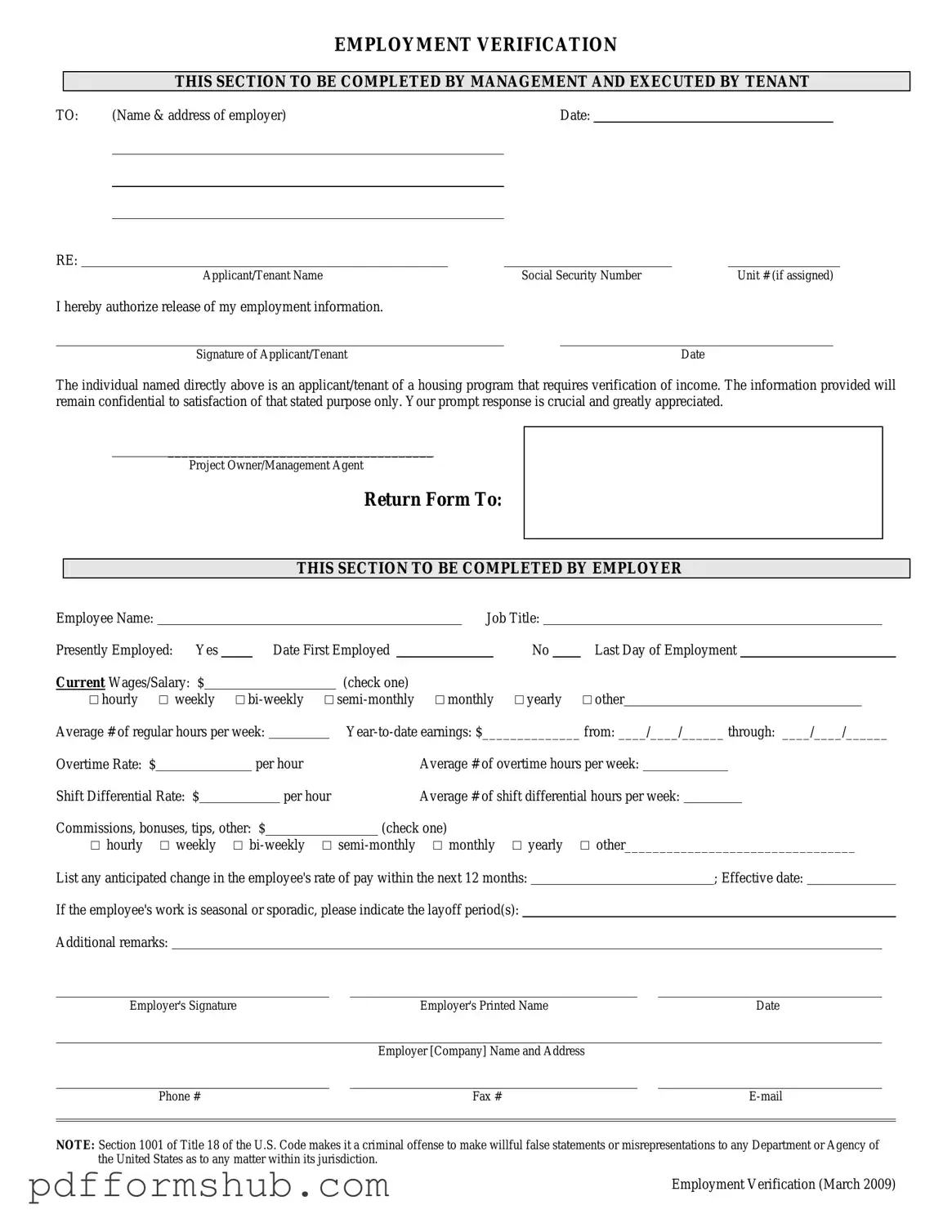When navigating the hiring process, employers often rely on the Employment Verification Form to confirm a candidate's work history and qualifications. This essential document serves as a bridge between a job applicant's claims and their actual employment experiences. Typically, it requests information such as the candidate's previous job titles, dates of employment, and responsibilities held. Additionally, the form may require details about the employer, including contact information, to facilitate direct verification. By using this form, companies can ensure they make informed hiring decisions, reducing the risk of potential issues down the line. Furthermore, applicants benefit from this process as it allows them to present their professional background transparently, fostering trust with prospective employers. Overall, the Employment Verification Form plays a crucial role in the employment landscape, ensuring both parties engage in a fair and informed hiring process.
